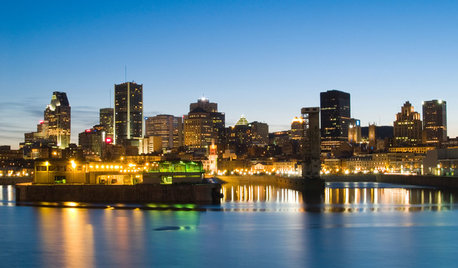Capitalism is Anti-Environment
From Here to Economy
Can capitalism be harnessed to solve environmental problems, or is capitalism itself the problem?
By Stan Cox
23 Apr 2004
When right-wing pundits and corporate flacks compare environmentalists to watermelons (green on the outside, red on the inside), they mean it as a slur.
But when eco-socialists look at the wider environmental movement, they see a big green tomato that had better ripen up, and soon. Hybridizing the analyses of Karl Marx with those of modern-day ecological economists, they maintain that we'll never stop degrading the ecosphere unless we tackle capitalism and the unsustainable growth that lies at its core. For at least one part of their argument -- that economic growth is out of control -- eco-socialists can call on plenty of mainstream backup. For example, the Oakland, Calif.-based group Redefining Progress reports that in 2000, human consumption and waste production had reached its highest point ever, exceeding by 15 percent the planet's biological capacity to produce and absorb.
Trash: Capitalism's back-door exit
That we are beginning to burst the seams of the ecosphere would have come as no surprise to Nicholas Georgescu-Roegen. An economist at Vanderbilt University from 1950 to 1976, Georgescu-Roegen showed that the entire economic process can be represented by just two factors: a front-door entrance for resources -- concentrated energy and highly ordered materials -- and a back-door exit for wastes. An economy's only product, he argued, is nonmaterial "enjoyment of life," which can be accumulated only as memories.
The implications of Georgescu-Roegen's analysis are profound and unavoidable: Provided our species survives, there lies somewhere in its future another Stone Age, and the faster our economic growth, the steeper the decline will be. The next Stone Age will be bleaker and more toxic than the last, and there will be no shot at a comeback.
Georgescu-Roegen's 1971 book The Entropy Law and the Economic Process was read widely and hailed as a seminal work. Then most economists stuffed it onto their bookshelves to be consulted no more. Its message was simply too dismal even for the dismal science.
But a brave few, known as ecological economists, have taken Georgescu-Roegen seriously. [Editor's note: See a series of Grist articles on ecological economists.] Starting with Herman Daly's 1977 classic Steady-State Economics, they have spent decades drawing up blueprints for an economic system that could push that new Stone Age into the immeasurably remote future, while ensuring that the intervening years are humane, even comfortable.
In a recent textbook, Ecological Economics, Daly and coauthor Joshua Farley do not urge the demolition and rebuilding of whole economies, but rather the "stretching and bending" of existing institutions, in order to squeeze them inside the planet's ecosystems in a way that does as little damage as possible.
Meet the Flintstones
But stretching and bending won't be enough, say eco-socialists, if we are to forestall that new Stone Age. For that, we will have to break completely free of the laws of capitalism.
That message could be put no more clearly than in the title of Joel Kovel's 2002 book The Enemy of Nature: The End of Capitalism or the End of the World? Kovel is a professor of social studies at Bard College and recently joined the journal Capitalism Nature Socialism as editor.
When I asked Kovel why capitalism is at the core of current ecological crises, he said, "The basic rules of capitalism are private ownership and competition. In such an economy, a firm must continually expand its market share and/or increase its rate of profit. Otherwise, it will go extinct."
In the eco-socialist view, the global capitalist system and all of its parts, from Halliburton to your local sporting-goods store, depend at their core on an unsustainable perpetual-motion machine: economic growth.
Money
To you and me, the inherent value of "stuff" like oil or trees or a series of musical notes is obvious. But, as Marx observed, inherent value doesn't count for much in the worldview of capitalist economics, where every scrap of stuff becomes, first and foremost, a commodity that exists for converting money into more money.
In a well-functioning capitalist economy, the cycle that turns money into stuff and stuff into more money runs as fast as possible, recognizes no limits, and refuses to be stretched, bent, or squeezed into any ecosystem.
Set this analysis alongside Georgescu-Roegen's model of the economic process as accelerated, irreversible decay, and the future begins to look a lot like a rerun of The Flintstones without the laugh track.
Kovel argues that intangible growth in finance and speculation is parasitic on the matter- and energy-dependent economy, though it can give the illusion that economic growth is becoming "de-linked" from the material world. "Ecosystems are always degraded in tandem with growth," he told me. "Even though money is imaginary, with no real existence outside our own heads, it's always connected to the material world."
Take the much-hyped "weightless economy" of the dot-com boom, which was anything but. "The 'information economy' is destructive in its own ways," Kovel said. "Computers are being used and replaced in short cycles. And because they contain tightly integrated combinations of diverse and often toxic materials, it has been said that a PC is harder to recycle than a locomotive. They are mostly just dumped."
Don't some capitalist enterprises work hard to avoid causing ecological damage, or even repair it? Of course, said Kovel. Indeed, his own brother runs one such company, but "a firm can stay virtuous only by staying small." And that leaves the economic field open to domination by the faster-growing, more ecologically destructive players -- and elimination of the small fry.
Capitalism au Naturel?
You won't get concrete solutions to specific environmental problems from Kovel and other eco-socialists. For those, they will refer you to the prescriptions of ecological economists -- measures like government regulation, ecologically oriented taxes and subsidies, high and low income limits, worker ownership, and redistribution of profits. But they'll stress that those are not solutions in themselves, that the core problem is capital-fueled growth, and that those measures intended to restrain growth will succeed only if they also lend a hand to dismantling the rule of capital.
Paul Hawken couldn't agree less. [Editor's note: Read a Grist interview with Hawken.] When it comes to ideas for encouraging economic growth while preserving "natural capital" -- natural resources and the ecological systems that support life -- Hawken's got a million of 'em. He's a business leader and environmentalist whose book Natural Capitalism, coauthored with Amory and Hunter Lovins, is packed with such ideas: everything from a proposal to establish markets in conserved energy ("negawatts") to a blueprint for a super-efficient Hypercar, which, say the authors, has the capacity to haul the hydrogen economy from theory to reality.
Hypercar: not just hype?
Hawken told me, "Amory and I fully believe that a 99 percent reduction in the throughput of energy and resources is possible and will eventually occur." Wow! How? One key is developing better technology; another is placing proper economic values on the ecosphere and its components. Once that's done, Hawken and Lovins predict big gains in efficiency and a profusion of market-based environmental solutions.
Now, when efficiency is proposed as a key to sustainability, it brings to mind a paradox first posed by the 19th-century British economist William Stanley Jevons in his book The Coal Question. He noted that greater efficiency in the use of one resource, say coal, will increase profits, stimulate investment and growth, and lead to even greater consumption of coal and other resources.
When I asked Hawken about the paradox of efficiency, he said we have to take a whole-systems approach, and then Jevons' argument won't hold: "Dramatic increases in resource productivity must be accompanied by changes in subsidies and taxes that will lead to full-cost accounting. What we have now is the idea that it is too expensive to be radically productive. We tend to think it's cheaper to double-glaze the planet than to convert to renewable energy." What's needed, he argues, is a complete revolution in worldview.
Hawken says that public policy and technology can push each other in the right direction: "For example, running cars on hydrogen is about five times the expense as gasoline. But if the car gets five times the efficiency per BTU, then there is no real cost difference. If you go to factor 10, then society is actually saving money by converting to hydrogen as a primary fuel source for transport. And we can begin to draw down [carbon dioxide] levels."
Kovel counters that Hawken's ecologically enlightened capitalists would be as powerless as the more traditional of their breed to control the system's destructiveness, no matter what incentives they're given. Every year, he points out, larger quantities of wealth roam the planet in search of profitable investments.
In his book, Kovel uses the image of a universal force field to describe private capital's penchant for spawning destructive growth. If "force field" sounds a bit too sci-fi, think of capital in terms of the "gopher game" at the arcade: No matter how many gophers you send back into their holes with a whack on the head, more will pop out of other holes.
John Bellamy Foster is associate professor at the University of Oregon, coeditor of the socialist magazine Monthly Review, and author of Ecology Against Capitalism and Marx's Ecology. He maintains that any mix of subsidies, taxation, regulation, and efficiency sufficient to harness private capital for ecological ends would find itself in constant conflict with the capitalist economy's primary goal: growth.
Traffic
In discussing global warming -- the one ecological crisis that looms above all others -- Foster says, "Emissions of carbon dioxide and other greenhouse gases by automobiles cannot be reduced to an acceptable level unless values other than money are brought decisively to the fore."
In America, he says, the sheer economic bulk of automobile production, road and bridge construction, tourism, shipping of goods, and the suburban-commuter lifestyle means that only a thoroughgoing reconstruction of the economy can cut emissions to an acceptable level. For example, we aren't seeing a wholesale conversion to energy-efficient mass transit simply because it could never generate as much wealth for the capitalist class as does the personal automobile.
Foster's point is illustrated by an anecdote in Keith Bradsher's recent book High and Mighty: SUVs, the World's Most Dangerous Vehicles and How They Got That Way. A promise by the Ford Motor Company back in 2000 to reduce the CO2 emissions and improve the gas mileage of its SUVs by 25 percent within five years caused agony among other automakers. They liked their SUVs the way they were -- cheap to make and profitable to sell -- and had no desire to compete in the environmental arena.
Their fears vanished when a scandal over the high rollover rate of Explorer SUVs riding on Firestone tires sapped Ford's resources and attention and helped derail its plan for big, "green" vehicles. But at the height of Ford's environmental enthusiasm, one top executive repeatedly pointed out that improving the fuel efficiency of their SUVs would generate waves of good press that, in turn, would easily repay the company's efforts with increased sales. So, had the strategy succeeded, it might actually have increased overall emissions by putting more SUVs on the road.
Another gopher popped from its hole when a huge increase in aluminum recycling, starting in the 1970s, allowed cans to be produced at one-third the energy cost of those made from mined aluminum. That improved the beverage industry's efficiency, and the number of canned drinks consumed per American has since doubled.
Economy Class
To professors and policy-makers, ecological breakdown may appear as a particularly nasty-looking cloud on the horizon, but to the planet's most impoverished inhabitants, a bleak, brown landscape is already a daily reality.
Kovel says that the growing chasm between rich and poor is itself an obstacle to environmental reform: "Capitalism always produces poverty, alienation, and unemployment as it produces wealth. And if you don't regulate the distribution of wealth, you have an increasingly chaotic system. There are many fine recommendations to restrain capital's environmental impact, but they all require a stable world order if they are to succeed. That order clearly does not exist, and won't exist as long as rich nations and people exploit poor ones."
Living on the edge of capitalism.
But Hawken contends that natural capitalism can create a world in which the vicious feedback loop between the impoverishment of people and the degradation of ecosystems is broken. Natural capitalism, he said, "provides a framework for imagining how human needs can be met globally while reducing our impact upon the planet. Unless we move to a full-cost system, wants will grow endlessly. Unless we take business out of politics, prices will never reflect cost or value. Unless it is in our own best interest to live well within our means, income polarization will broaden."
Foster reverses the sequence, putting human justice first: "I too have faith that humanity as a whole has the desire and ability to avert ecological catastrophe -- but that can happen only in a society that has eliminated class exploitation."
In pressing their case, eco-socialists often run up against a formidable, two-word rejoinder: "Soviet Union." But they are painfully aware of the Communist world's grimy environmental history and reject Soviet-style central planning.
Kovel says today's myriad proposals for achieving sustainability can become workable solutions only "if people can create and carry out those plans freely, not under orders from above. That is something the USSR never came close to achieving, and it was at the root of its eco-destructivity. But to believe that the Soviet road is the only way to a post-capitalist society is to have no imagination."
Building a worldwide eco-socialist movement will require imagination aplenty, and fortitude as well. To go up against global capitalism at the height of its power will be no picnic. But eco-socialists see no other option when, to paraphrase Kovel, it's either the end of capitalism or it's ... The End.













randy_f
Mozart2
Related Discussions
The anti-Organic Movement
Q
trees and environment
Q
Capital Beltway Horticulture Shows
Q
Duel fuel or all gas??? Capital, blue star, ilve, American range?
Q